The iPhone evolution: here's how Apple's iconic smartphone improved over the past 7 years

Can you believe that more than seven years have passed since Steve Jobs announced the very first iPhone? Yup, and it has been quite a ride for the company and industry since then! The iPhone didn't only become a hit. It single-handedly defined what a modern smartphone should look and feel like. It is, without a doubt, the most highly desired smartphone on the market, and the announcement of each new model is an event anticipated by millions of fans. This brings us to today – the day when the iPhone 6 and the iPhone 6 Plus were made official. The time seems ideal for a quick retrospective, so without further ado, let us embark on a journey through the history of Apple's iconic smartphone.
The iPhone that got it all started
In June 2007, Apple made headlines by announcing a revolutionary new phone, a widescreen iPod with touch controls, and a powerful internet communicator. These were not separate devices, however; the first-gen iPhone was all that, all the while looking great in its metal outfit. Unlike most other phones at that time, the first iPhone relied on a touchscreen interface. It had a large (for the time) 3.5-inch display, and the only button found on its front panel was the home key. And unlike most other smartphones, the iPhone needed no stylus as its capacitive touchscreen and user interface were optimized for use with a finger. Apple's competitors were quick to dismiss the iPhone as a product with no potential due to its lack of a physical keyboard, but the market thought otherwise. The iPhone didn't only sell well. It paved the way for a revolution.
The iPhone 3G: now with an App Store, push notifications, and GPS
About a year later came the iPhone 3G. It brought along a slight redesign as it had a plastic back, in either black or white, instead of a metal one, but the really significant changes concerned the phone's hardware and software. As its name implied, it offered 3G connectivity (its predecessor was limited to EDGE connectivity only). A GPS radio was also added. And on the software side of things, Apple introduced the App Store, where users could download third-party applications from, push notifications, and Exchange support to meet the needs of corporate users.
The iPhone 3GS, where "S" stands for speed
In June 2009, Apple announced the iPhone 3GS, which packed more processing power than its predecessor. This allowed it to deliver a smoother user experience – apps launched faster, games ran better, the UI was more responsive. The camera was treated to an upgrade as well. First and foremost, its resolution was bumped to 3MP for more detailed images. Also, the camera now had auto-focus, and the camera app allowed the focus area to be set with a tap. The phone came with a new version of the iPhone operating system which included voice controls, internet tethering, and turn-by-turn navigation.
The iPhone 4: resolutionary screen, iconic design
The iPhone 4 was a notable upgrade over the iPhone 3GS. First and foremost, it brought along an incredibly (for the time) pixel-dense display. While its 3.5-inch diagonal size was nothing out of the ordinary, its 326 PPI pixel density took quite a while to beat. The iPhone 4 was also quite different from its predecessor in terms of design. Its front and back sides were made of glass while the frame surrounding the device was made of metal. It was also a part of the antenna system, unfortunately, and that led to some serious issues. Remember the infamous "Antennagate" scandal? For those needing a refresher, the iPhone 4 would lose signal strength when held in a particular way. Nevertheless, it was another success in Apple's book, and eventually, an upgraded model came along.
The iPhone 4s: same on the outside, new on the inside
At a glance, the iPhone 4s didn't seem any different from the iPhone 4. It did not suffer from the aforementioned antenna issues, however, and introduced quite a few hardware improvements, including a faster, dual-core processor and an 8MP camera which turned out to be one of the best at the time. As a matter of fact, it became the most popular camera on Flickr. People loved it for its speed and for the great images that it was capable of taking with minimum effort on the user's side. Plus, it could capture great video at 1080p resolution.
The iPhone 5 brought a larger screen, a slimmer design, and LTE connectivity
The iPhone 5 was announced in September of 2012. Unlike all previous iPhone models, it came with a 4-inch screen instead of a 3.5-inch one, all while retaining the 326ppi pixel density of its predecessor. Its design was improved as well. As a matter of fact, the iPhone 5 was the slimmer and ligher iPhone we had seen until that day. Under the hood was placed an even faster processor. The camera resolution still stood at 8MP, but a better DSP allowed it to take clearer images and more stable 1080p videos. Plus, this is when Apple added sweep panoramas to its camera app. We must also mention that the iPhone 5 was the first iPhone to support 4G LTE connectivity.
iPhone 5s: faster processor, Touch ID, iOS 7.0
Along with the iPhone 5s, Apple launched its seventh major iOS release. Its flat, colorful looks made it quite different from previous iOS versions, and reviews were mixed at the time, but eventually, people got accustomed to the platform's new look. Besides, it was made better than before, with the handy Control Center and 64-bit support. As for the iPhone 5s, it did not bring only the mandatory hardware upgrades, among which was a faster A7 processor. It introduced us to Touch ID – a fingerprint scanner embedded in the home screen. Also, this was the first iPhone to come in gold, in addition to white and black. The camera resolution was not altered, but the flash was improved by adding a second, warm LED that helped to produce more natural light in dark shots.
iPhone 5c: for the colorful
At the very same event, Apple also introduced the iPhone 5c – a plastic-made iPhone that was available in 5 fun colors. On a hardware level, it was pretty similar to the iPhone 5, save for its improved front-facing camera. Unfortunately for Apple, this particular iPhone model didn't sell well, which is probably why we didn't see a successor at tonight's event. Speaking of which...
iPhone 6: bigger, bolder, faster
Size is one of the biggest differences between the iPhone 6 and its predecessor. The new model is slightly bigger, with a 4.7-inch display, yet thinner, at only 6.9 millimeters. To no surprise, the iPhone 6 also brings along a faster processor, a more pixel-dense display covered by extra-toughened glass, and an even better 8MP camera. On the software side of things, the refined iOS 8 runs the whole show. Take a look at our iPhone 6 coverage to learn more about Apple's latest iPhone model.
iPhone 6 Plus: for those who won't settle for any less
And last but not least, we have the iPhone 6 Plus, which got announced alongside the 4.7-inch iPhone 6. The Plus is an even larger model, sporting a 5.5-inch, 1080p display. On a hardware level, it is more or less identical to the iPhone 6, the only differences being its optically-stabilized camera, bigger battery, and higher display resolution. iOS 8 – the latest and greatest version of Apple's mobile platform – is what runs on the iPhone 6 Plus.
Size comparison: all iPhones - from the first generation to the 6 Plus
Follow us on Google News

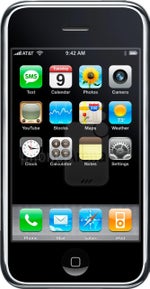
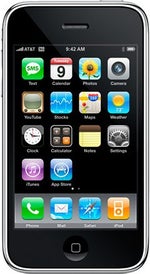
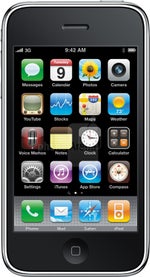


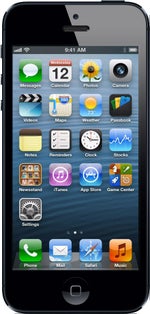
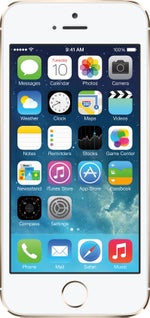

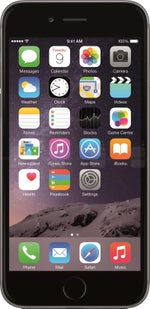
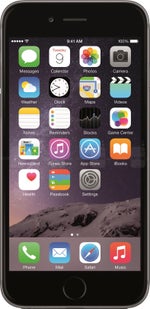

















![A new Android bug is making it impossible to install new apps. Are you affected? [UPDATE]](https://m-cdn.phonearena.com/images/article/176703-wide-two_350/A-new-Android-bug-is-making-it-impossible-to-install-new-apps.-Are-you-affected-UPDATE.webp)

Things that are NOT allowed:
To help keep our community safe and free from spam, we apply temporary limits to newly created accounts: